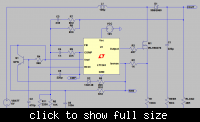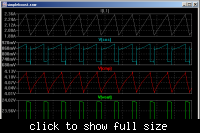enridp
Newbie level 4

Hi !
I'm trying to power a DC motor with batteries, the motor is 24V and a consumption from 100 to 300mA.
I was thinking in using 9V (6 AA batteries) and boosting to 25V with a MC3403.
But calculating the components with this page:
**broken link removed**
I found that from 9 to 25V I have a max Iout of 240mA (Imax supported is 1.5A for MC3403), so the efficiency is:
[(25*0.24)/(9*1.5)] = 44% !!
Am I doing something wrong? I thought that MC3403 was a very efficient DC-DC converter.
Thanks !!
Enrique.
I'm trying to power a DC motor with batteries, the motor is 24V and a consumption from 100 to 300mA.
I was thinking in using 9V (6 AA batteries) and boosting to 25V with a MC3403.
But calculating the components with this page:
**broken link removed**
I found that from 9 to 25V I have a max Iout of 240mA (Imax supported is 1.5A for MC3403), so the efficiency is:
[(25*0.24)/(9*1.5)] = 44% !!
Am I doing something wrong? I thought that MC3403 was a very efficient DC-DC converter.
Thanks !!
Enrique.




